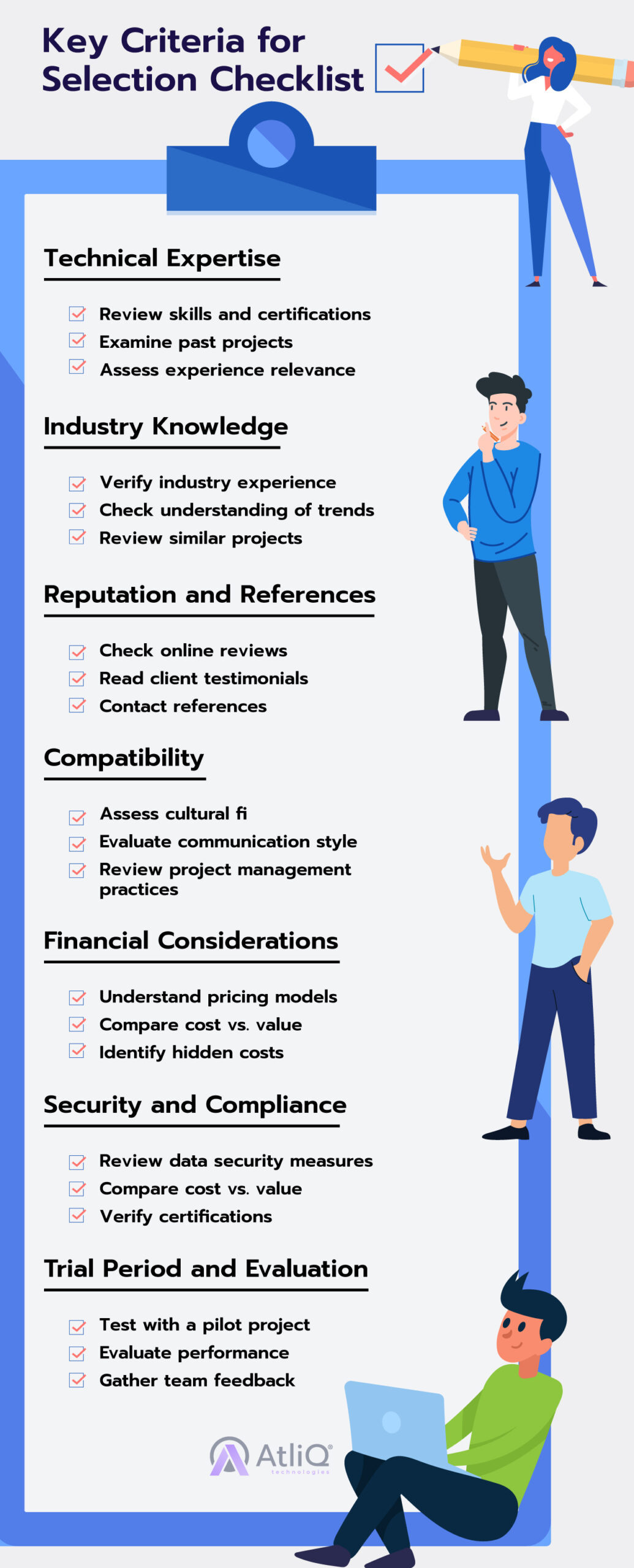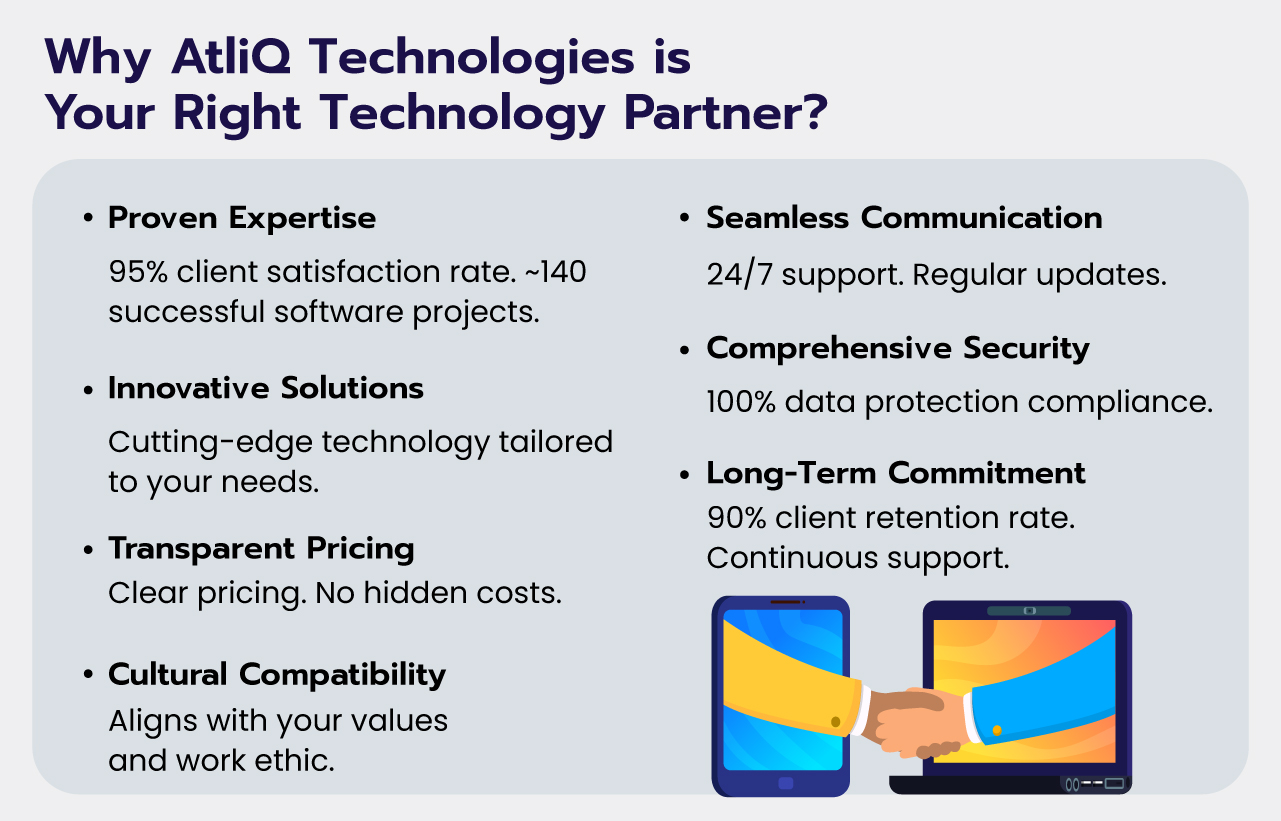
Imagine you’re about to embark on a journey and need the perfect travel companion. Someone who understands your goals, shares your vision and has the expertise to navigate the challenges ahead. That’s exactly what finding the right technology partner is like—a crucial decision to make or break your business success. The right technology partner isn’t just a vendor; they become an extension of your team, a catalyst for innovation, and a cornerstone of your business success. Whether you’re looking to outsource a specific project or seeking long-term collaboration, this ultimate guide will arm you with the knowledge and insights needed to make an informed, confident choice. Let’s embark on this journey together and discover how to find a partner who aligns with your vision, meets your needs, and propels your business forward.
Ready to dive in and find your perfect match? Let’s get started!
Understanding Your Needs
Before embarking on the search for the perfect technology partner, it’s crucial to have a clear understanding of your own needs. Start by assessing your company’s technology requirements: What challenges are you facing? What goals are you aiming to achieve? Next, identify the specific skills and expertise that are essential for your project. This will help narrow down your options to partners who can truly add value. Finally, define the project scope, timeline, and budget. Having a detailed outline of these parameters will ensure that both you and your potential partner have aligned expectations from the very beginning. By thoroughly understanding your needs, you set the foundation for a successful and productive partnership.
Evaluating Compatibility
Ensuring compatibility with your technology partner goes beyond just technical skills; it involves a deep alignment in several key areas:
- Cultural Fit
- Aligning Company Cultures and Values: Both companies must share similar values and work ethics. For instance, if your company values innovation and agility, partnering with a firm that prioritizes traditional methods might lead to conflicts. Look for partners whose culture resonates with your own to ensure a smoother collaboration.
- Communication Styles and Language Proficiency: Effective communication is vital. For example, if your team prefers concise and direct communication, partnering with a firm that uses a more detailed and formal approach might lead to misunderstandings. Ensure that your partner’s communication style and language proficiency align with your team’s preferences.
- Work Ethics and Management Practices
- Project Management Methodologies: Different partners may use varying project management approaches. If your company follows Agile methodologies, but your partner uses Waterfall, this misalignment could hinder progress. Confirm that their project management style matches your workflow for seamless integration.
- Time Zone Considerations and Availability: Time zones can impact project timelines. For instance, working with a partner in a significantly different time zone might delay feedback and decision-making. Ensure that their working hours and availability align with your project’s needs and your team’s schedule.
- Collaboration and Communication
- Tools and Channels Used for Communication: Compatibility in communication tools is essential. For example, if your team uses Slack for instant messaging and your partner prefers email, this mismatch could slow down collaboration. Agree on the tools and channels that will be used to ensure smooth and efficient communication.
- Frequency and Quality of Updates: Regular updates keep projects on track. If your partner provides infrequent updates, it could lead to surprises and misaligned expectations. Make sure they commit to a schedule for updates that suits your project’s needs and maintain high-quality communication.
By evaluating these aspects of compatibility, you can select a technology partner who will seamlessly integrate with your team and contribute to a successful, productive collaboration.
Key Criteria for Selection
Choosing the right technology partner involves evaluating several key criteria to ensure a successful collaboration. Begin with technical expertise and experience, reviewing the partner’s past projects and case studies to gauge their capabilities. Industry knowledge is equally important; a partner with domain-specific experience can offer valuable insights and solutions. Reputation and references provide a window into the partner’s reliability and quality of work. Check reviews, and testimonials, and speak with past clients to get a comprehensive understanding. By carefully considering these factors, you can confidently select a partner who aligns with your business needs and goals.
Financial Considerations
When choosing a technology partner, financial considerations play a pivotal role in ensuring a successful collaboration without unexpected financial strains. Here are key factors to evaluate:
- Cost vs. Value
- Understanding Pricing Models: Different partners may offer various pricing models such as fixed prices, hourly rates, or retainer agreements. For example, a fixed price model provides a clear budget upfront, while an hourly rate might be more flexible but can lead to cost overruns. Understanding these models helps you select the best fit for your project.
- Balancing Cost with Quality and Value: The cheapest option isn’t always the best. For instance, a lower-cost partner may deliver subpar quality, leading to additional expenses for rework. Assess the value provided in terms of expertise, reliability, and results to ensure you’re getting the best return on investment.
- Transparency in Pricing
- Importance of Clear and Detailed Pricing Structures: Transparent pricing helps avoid misunderstandings and hidden costs. A detailed proposal should break down costs for each phase of the project. For example, a clear contract specifying costs for development, testing, and maintenance can prevent budget surprises and ensure all parties are on the same page.
- Identifying Hidden Costs: Be vigilant about potential hidden costs that might not be obvious initially. These can include costs for additional features, overtime, or post-launch support. For instance, ensure the agreement outlines any extra charges for scope changes or additional rounds of revisions to prevent unexpected expenses.
By carefully considering these financial aspects, you can select a technology partner who not only fits your budget but also delivers high-quality work and maintains transparency throughout the project. This approach ensures a cost-effective and smooth partnership.
Testing and Trial Period
Before committing to a long-term partnership with a technology provider, conducting a testing and trial period can significantly mitigate risks and ensure compatibility. Here’s how to approach this crucial phase:
- Pilot Projects
- Importance of Starting with a Small Project: Initiating the partnership with a small, manageable project allows you to evaluate the partner’s capabilities without a significant commitment. For example, you might assign a small development task or a prototype project to see how the partner handles it. This approach minimizes risk and provides a clear view of their working style and efficiency.
- Assessing Performance During the Trial Period: Throughout the pilot project, closely monitor the partner’s performance. Evaluate their adherence to deadlines, quality of deliverables, and responsiveness to feedback. For instance, if the partner consistently meets milestones and delivers high-quality work, it’s a good indicator of their reliability and competence.
- Feedback and Evaluation
- Gathering Feedback from Your Team: Collecting feedback from your team members who interact with the partner is crucial. They can provide insights into communication effectiveness, collaboration ease, and overall satisfaction. For example, your project manager, developers, and QA team can share their experiences to help you understand the partner’s strengths and weaknesses.
- Making a Final Decision Based on Trial Results: Use the data and feedback gathered during the trial period to make an informed decision. Assess whether the partner met your expectations, aligned with your working style, and delivered the quality of work required. If the trial results are positive, you can confidently proceed with a long-term partnership. Conversely, if there were significant issues, it might be wise to consider other options.
By conducting a thorough testing and trial period, you can ensure that the technology partner you choose is well-suited to meet your project’s demands and your company’s expectations. This step is essential in establishing a successful and sustainable collaboration.
Building a Long-Term Relationship
Establishing a long-term relationship with your technology partner is key to sustained success and continuous innovation. Start by setting clear contracts and Service Level Agreements (SLAs) that outline roles, responsibilities, and performance metrics. This ensures that both parties have aligned expectations from the beginning. Regularly scheduled performance reviews and feedback sessions help maintain high standards and encourage continuous improvement. Foster open communication and collaboration to build trust and address any issues promptly. By investing in a strong, ongoing partnership, you create a foundation for mutual growth, innovation, and long-term success.
Choosing the right technology partner is a critical decision that can significantly impact your business’s success. By thoroughly understanding your needs, evaluating key criteria, and ensuring compatibility, you can identify a partner who aligns with your goals and values. Financial considerations and a well-planned testing and trial period further help in making an informed choice. Building a long-term relationship with the right partner fosters continuous innovation and growth. With this ultimate guide, you’re equipped with the insights and tools needed to navigate the selection process confidently. Remember, the right partner is not just a service provider but a strategic ally in your business journey.
Take the time to choose wisely, and you’ll set the foundation for a successful and enduring collaboration.

